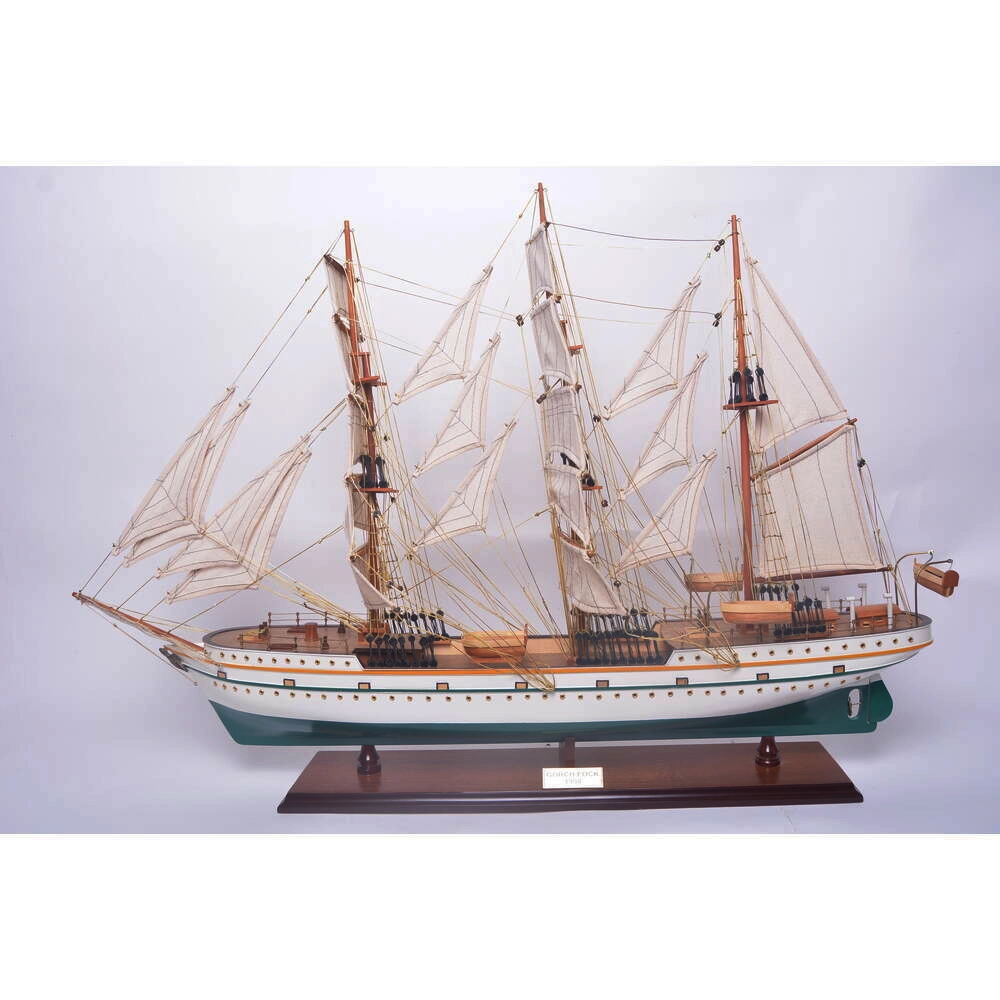Description:
The Gorch Fock ship model represents a detailed replica of the famous German naval training ship originally launched in 1933 and still operational, renowned for training thousands of cadets in seamanship. This model is an exquisite showcase of craftsmanship, constructed from premium materials such as cedar wood, mahogany, teak, and various other exotic woods, giving it both durability and a visually striking appearance.
The sails of the Gorch Fock model are made from high-quality linen, imparting a realistic texture and look that enhances its authentic feel. The flags are also crafted from fabric, consistent with the true design elements of the ship. Metal components including the nameplate and ornamental fittings are made from high-quality, rust-resistant metal, ensuring that the model retains its aesthetic value over time.
This model is entirely handcrafted, with each component meticulously assembled over hundreds of hours, reflecting the dedication and skill of the artisans. Observing the model, one can appreciate its complex rigging, the natural color palette of the hull, and the numerous sails that mark its readiness for a voyage. The Gorch Fock model features three main masts that are prominently rigged, which add to its imposing stature and detail.
Ideal for display, this model can adorn various settings like maritime museums, corporate offices, or private collections, offering a touch of historical elegance and nautical spirit. It serves not only as a decorative piece but also as an educational tool that brings the rich tradition of naval training ships to life, making it a valuable addition to any collection.
History:
German Ship Gorch Fock (1933)
The Gorch Fock is a three-mast barque, first launched in 1933 by Blohm & Voss in Hamburg, Germany. It was named in honor of the German writer Johann Kinau, who used the pseudonym "Gorch Fock" and perished in the 1916 Battle of Jutland. The ship's construction was spurred by the tragic sinking of the training ship Niobe in 1932, which deeply impacted the German public and navy. In response, the Gorch Fock was built as a robust training vessel to prevent similar disasters, featuring a heavy steel ballast to enhance stability.
Naval Service and Wartime History
Initially serving as a training ship for the German Reichsmarine, the Gorch Fock's career was interrupted by World War II, during which it served as a stationary office ship. In 1945, as the war neared its end, the ship was scuttled by its crew in the shallow waters off Rügen to prevent Soviet capture. However, the Soviets later salvaged and restored the vessel, renaming it Tovarishch ("Comrade") in 1951 and integrating it into their naval training fleet based in Odessa. Under this new guise, the ship participated in numerous international tall ship races and even completed a global voyage in 1957.
Post-Soviet Era and Museum Status
With the dissolution of the Soviet Union, the Tovarishch briefly sailed under the Ukrainian flag before being declared unseaworthy in 1993 due to the lack of funds for necessary repairs. The ship was stranded in British ports until 1999, when sponsorship enabled its transport to Wilhelmshaven for restoration. In 2003, the vessel was returned to Germany, restored to its original name, Gorch Fock, and transformed into a museum ship at its home port in Stralsund. Extensive repairs in 2008 and a major renovation in 2024 have preserved the ship, which now serves as a historical exhibit, commemorating its varied and storied past across different regimes and naval uses.



